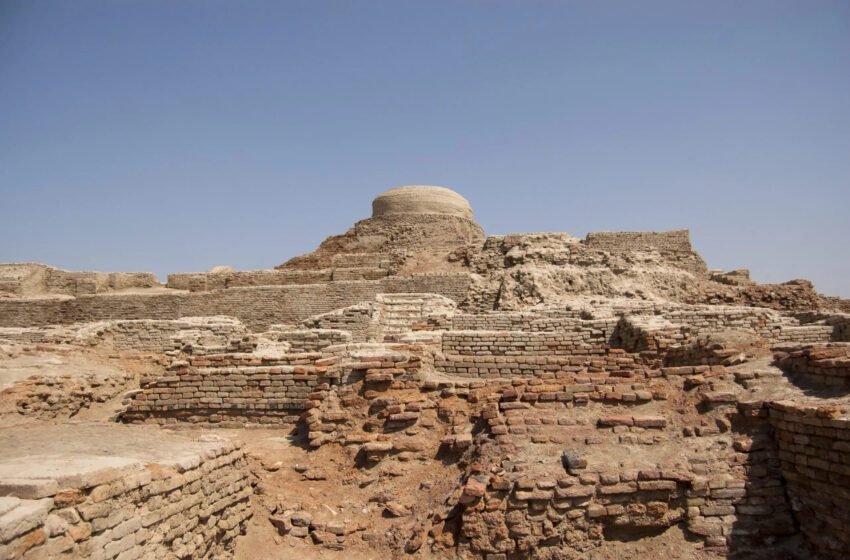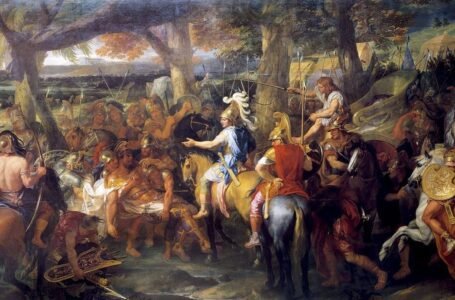Rakhigarhi: Speaking Out the Secrets of the Old Architectural Marvels of the Indus Valley Civilization

Located in the agricultural contexts of the framework of Ghaggar-Hakra Water course, Rakhigarhi is one of the biggest site destinations of the IVC otherwise called Harappa advancement. Located in the district of Hisar in Haryana, this ancient site has been a gold mine of information that has helped historians and archaeologists to unravel the life and growth of one of the oldest urban civilisation centers of the world. However much of historical importance it had, Rakhigarhi remained fairly invisibility similar to Museum Contrast to other Indus Valley sites like Harappa and Mohenjo-Daro until recent excavations that unearthed its importance.

Rakhigarhi’s worth, in any case, is not in size — albeit it stretches over more than 350 sections of land, it is one of the biggest IVC sites — yet in the number of relics and data that it imparts. It contrasted interesting facts of the financial, political as well as the social life of the Harappan civilization. It furthermore raises questions about what was once thought about the sophistication and ubiquitousness of Indus Valley Human advance, offering an intricate and globalized community that was once believed to be the case. This blog delves deep into the discovery, journey and history of Rakhigarhi and some of the secrets embedded in this city and its place in a broader context of the Harappan civilization.

History
The Indus Valley Human advancement, unwavering between 3300 BCE and 1300 BCE, was at the time the most raised metropolitan social order on the planet. It had a high level metropolitan preparation, refined seepage frameworks and wide exchange associations, the human progress covered a vast territory of parts of current Pakistan, India and Afghanistan. Anyhow, due to the decline of the development around 1800 BCE, the surrender of the urban communities was concealed under the cover for centuries.
That Rakhigarhi, as other big Harappan sites, was necessary for this vast and intertwined construction is obvious. However, it was during the sixties decade alone that the site was first considered as an archeological site by the Archeological Survey of India (ASI) of the old city. In the beginning of the studies, Rakhigarhi was identified on the map of promising places, although it was for the most part unknown to a significant extent, until the end of the twentieth century.

The understanding of Rakhigarhi began to emerge during the early nineties when archeologists began to focus on targeted intensive surveys and small scale excavations. These pioneer efforts put forward that Rakhigarhi was an immensely large Harappan city and potentially one of the largest of its kind even larger than the Mohenjo-Daro. This acknowledgment marked the beginning of yet another phase in the search of the lost past of the Indus Valley civilization as Rakhigarhi promised to unearth many more facts about the life and existence of the Harappans.
More excavation brought to light that Rakhigarhi had participation from the early Harappan phase upto the developed Harappan phase and maybe beyond. The set of experiences of this site speaks to the more broad noting of the Indus Valley Progress stage, from its development as a complex society to its zenith as one of the most concentrated metropolitan societies on the planet.

Journey
That transformation of Rakhigarhi from a nausea archeological site to one of global significance is a tale of consistency, passion and scientific discovery. In the first part of the 1990s the discoveries were rather limited but nevertheless they set a base for more deep research in the following years. These underlying ventures were motivated by a yearning to recognize level to which the site and its part in the more considerable Indus Valley advancement.
The first major breakthrough came in 1997 when a group of Indian archeologist led by Dr. Amarendra Nath from the ASI conducted a pin point excavation of Rakhigarhi. Their work revealed a very much planned urban community which possessed geographic road organization and assorted intricate disposal systems they found hints of commercial scale processes such as dot making and making ceramics. These discoveries indicated that Rakhigarhi was a big habitation as well as a major metropolitan heartland of the Harappan Civilization.

Similarly, the 1997 excavation also disclosed few burial sites which clearly indicated that Rakhigarhi was inhabited by a large and hierarchical society with distinct social and cultural traits. The disclosure of various curios such as gems, equipments and ceramics provided much insight to the lifestyle of the Harappans and its technological and artistic prowess.
After the partial removal exercise that was conducted in 1997, Rakhigarhi started attracting increasing attention from indigenous as well as international archeologists. Engagement with organisations including Deccan School Post-Graduate and Exploration Foundation and the Public Historical center in New Delhi have brought about more comprehensive study of the site. Such efforts have included relatively advanced techniques like remote sensing, DNA testing and radiocarbon dating that helped in painting a clearer picture about Rakhigarhi and its inhabitants.

One of the most recent practices may be one of the best enhancement of lately is the application of DNA examination to focus on the last stay parts discovered at Rakhigarhi. It was one more generalist report with the conclusion, dependent on the DNA of two old people from Rakhigarhi given by a group of specialists in 2019. The review was really useful for knowledge crucial pieces of information in regards to the previous history of the Harappans and their relatedness to their modern South Asian counterparts. This endeavor has challenged long held hypotheses regarding the inception of the Harappans and for that purpose has advocated the Harappans’ history to be much more intricate rather than being a linear progression.
Excavation
Exhuming out of Rakhigarhi has been a phased exploration where every phase exposes further horizons and casts other possibilities of reading out the Rakhigarhi. The essential period of large discoveries from the archeological point of view starting from the last part of the 1990s more particularly under the driving force of Dr. Amarendra Nath inculcate the design of the city and its foundation. This group exposed additionaled stays of domicile, road, and waste frameworks demonstrating a high-graded metropolitan human settlement. The disclosure of a commence of huge stoneware, instruments and diverse relics demonstrated that the place was essential for specialised items manufacture and exchanges.

Among these reports in this particular stage, one of the well-known disclosures was the identification of several hills which each had several parts of the ancient city. These hills have been named RGR 1-RGR 7 hence becoming the focal area of the subsequent diggings. Every hill has produced a lot of innovations and underlying residual remains and thus has given a sneak peek preview into the various aspects of life in Rakhigarhi.
The second phase of the excavation was initiated from middle of the 2000s decade; this focused on the burial customs of the Harappans. A few entombment were found and they unveiled an efficient system of ceremonies and social organizations. This burial practices entailed human skeletons and grave burial products which included Earthen vessels, beads, and mechanical instruments. These discoveries suggest that people of Rakhigarhi had well developed belief system and they placed much importance towards burial practices.

Since recently the discovery of Rakhigarhi has tend to contain considerably more interdisciplinary approach. Scholars have used the various technologies such as the ground penetrating radar(GPR) and aerial photography to map and identify potential features of the site. These procedures have allowed archeologists to conduct more focused excavations, which unearth new designs and antiques with greater level of accuracy.
Among the most fascinating aspects of the recent discoveries are the reveal of evidence of vast scale water management systems. A wells, supplies and seepage channels as seen at Rakhigarhi implies that the Harappans had embraced complex ways for the supply of water important for supporting a giant city population in a rather dry period. This disclosure has now included another dimension to how one could understand the innovative capabilities of the Harappans.

The process of excavating Rakhigarhi also have features that are strength of an on protection and conservation. Since the site has received global acclaim, attempts have been made to preserve the archeological relics and ensure that these are preserved for people in future. This includes the development of a gallery and a visitor’s center at the location through which the visitors can learn about the experiences and significance of Rakhigarhi.
Conclusion
To know and understand what Rakhigarhi is, one could say that this place is not just an archeological site; but a real look into the life of the people of the Harappan Civilization, which is one of the most advanced and mysterious civilizations of the ancient world. Some discoveries have been observed at Rakhigarhi challenging previous narratives concerning the Indus Valley Human advancement and those shared new feelings of vitality concerning its inception, advancement, and decay.
This change of Rakhigarhi for the position amongst the indefinite from concealed has been a show of logical demand as well as the importance of preserving our history. However as more excavations are carried out and new techniques are implemented Rakhigarhi promises to divulge far more privileged information regarding the ancient history.

In the large context of the whole Indus Valley Civilization, Rakhigarhi is unique site that can totally redefine the views on this early civilization. Thus, the evidence of state of the art metropolitan planning, advanced technology & and urban social structures at Rakhigarhi; underlines the importance of the Harappans throughout the entire length of human history.
As we continue the process of uncovering and focusing on Rakhigarhi, we are not only disclosing history, but also, by implication, getting lessons about the present and the future. The examples that can be learnt from Rakhigarhi regarding metropolitan planning, asset management and social relations are as relevant today as they were thousands of years ago. In this regard, Rakhigarhi is not only a village that belongs to history but a history that makes a call to the future.


